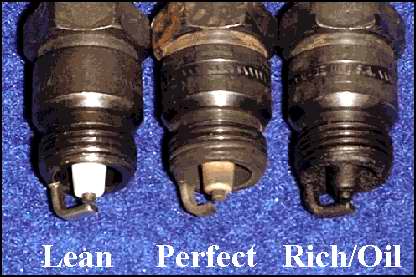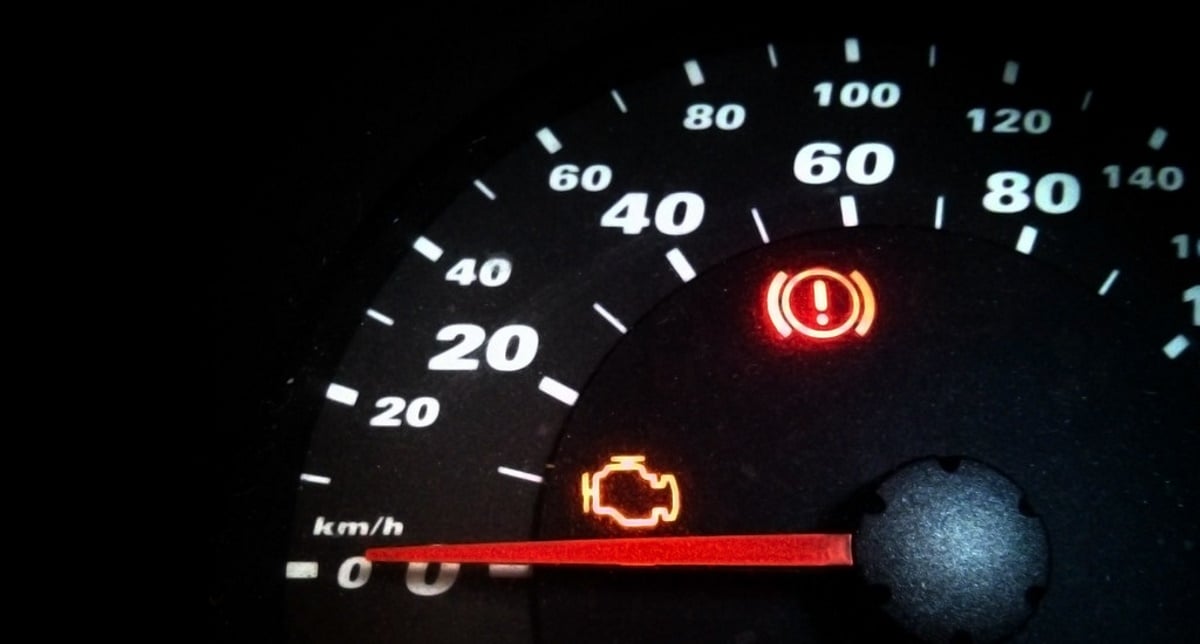Car engine running lean can be caused by issues with the fuel system, resulting in symptoms like rough idling and decreased fuel efficiency. To fix it, check for vacuum leaks and inspect the oxygen sensor for proper functioning.
Proper diagnosis and timely repairs are crucial to prevent further damage and optimize engine performance. Understanding the intricacies of a car engine is essential for every vehicle owner to ensure smooth operation and longevity of their vehicle. One common issue that can arise is the engine running lean, indicating that the air-fuel mixture is imbalanced.
This can lead to various symptoms such as rough idling, engine misfires, and decreased fuel efficiency. Recognizing these signs early on and addressing the root cause promptly is imperative to prevent potential damage to the engine and maintain optimal performance. By delving into the causes, symptoms, and solutions for a lean-running engine, you can effectively troubleshoot the issue and get your vehicle back on the road in top condition.

Credit: www.fiix.io
What Does It Mean When A Car Engine Is Running Lean?
Understanding what it means when a car engine is running lean is crucial for any car owner or enthusiast. A lean running engine refers to a condition where the air-fuel mixture in the engine is too lean or contains more air than fuel. This can lead to various issues, such as poor performance, decreased fuel efficiency, and potential damage to engine components.
Definition Of A Lean Running Engine
When the air-fuel mixture in an engine contains more air and less fuel, the engine is said to be running lean. The ideal air-fuel ratio for most gasoline engines is around 14.7 parts of air to 1 part of fuel, also known as the stoichiometric ratio. However, in a lean condition, there is an excessive amount of air compared to the fuel present in the combustion chamber.
Several factors can contribute to a lean running engine. These include:
- Faulty or dirty mass airflow sensor (MAF)
- Vacuum leaks in the intake manifold or hoses
- Malfunctioning oxygen sensor (O2 sensor)
- Blocked or clogged fuel injectors
- Defective fuel pump delivering inadequate fuel pressure
Recognizing the symptoms of a lean running engine is essential for diagnosing and resolving the issue. Common symptoms include:
- Poor acceleration and lack of power
- Hesitation or stumbling when accelerating
- Engine misfires
- Overheating
- Increased exhaust emissions
Fixing a lean running engine involves identifying and addressing the underlying cause. Here are some steps you can take:
- Inspect and clean the mass airflow sensor (MAF)
- Check for vacuum leaks and repair or replace affected components
- Test and replace a faulty oxygen sensor (O2 sensor)
- Clean or replace clogged fuel injectors
- Verify proper fuel pressure from the fuel pump
By addressing these potential causes, you can restore the air-fuel mixture to its optimal ratio, ensuring your car engine runs efficiently and smoothly.
Causes Of A Lean Running Car Engine
A lean running car engine can be caused by a variety of factors, all of which can impact the performance and efficiency of your vehicle. Understanding the causes of a lean running engine is crucial in diagnosing and resolving the issue to ensure optimal engine function. Below, we’ll explore some common causes of a lean running car engine and how they can affect your vehicle.
Vacuum Leaks
Vacuum leaks can disrupt the air-to-fuel ratio in the engine, leading to a lean running condition. These leaks can occur in various components, including the intake manifold gasket, vacuum hoses, and brake booster. When unmetered air enters the engine, it can cause the air-to-fuel mixture to become imbalanced, resulting in a lean running engine.
Faulty Oxygen Sensors
Faulty oxygen sensors can inaccurately measure the oxygen levels in the exhaust gases, leading to a lean fuel mixture. This can occur when the oxygen sensor is not functioning properly or is sending incorrect data to the engine control unit. As a result, the engine may receive an insufficient amount of fuel, causing it to run lean.
Dirty Or Clogged Fuel Injectors
Dirty or clogged fuel injectors can restrict the flow of fuel into the engine, resulting in a lean air-to-fuel ratio. When fuel injectors become clogged with debris or carbon buildup, they may not be able to deliver the appropriate amount of fuel to the engine, leading to a lean running condition.
Low Fuel Pressure
Low fuel pressure can contribute to a lean running engine by impeding the proper delivery of fuel to the combustion chambers. Issues with the fuel pump, fuel filter, or fuel pressure regulator can result in inadequate fuel pressure, causing the engine to run lean.
Symptoms Of A Lean Running Car Engine
When your car engine runs lean, it means there is an imbalance of fuel and air, leading to several noticeable symptoms that need immediate attention.
Engine Misfires
Misfires can occur when the engine doesn’t receive enough fuel, causing it to run roughly and potentially damaging the components.
Rough Idle
A lean running engine can lead to a rough and unstable idle, causing the car to shake and vibrate when at a standstill.
Lack Of Power
A lean engine may struggle to generate the power needed to accelerate efficiently, resulting in sluggish performance.
Increased Exhaust Emissions
Lean-running engines tend to produce higher levels of harmful emissions, impacting the environment and potentially leading to a failed emissions test.
Engine Overheating
Lean fuel mixtures can cause the engine to overheat due to the lack of sufficient fuel to cool it down, posing a risk of damage to the engine.

Credit: newparts.com
Diagnosing A Lean Running Car Engine
When your car engine is running lean, it means there is an imbalance between the air and fuel mixture. To pinpoint the root cause, Diagnosing a Lean Running Car Engine is crucial. Here are some essential steps to help you identify the issue:
Checking For Trouble Codes
Using an OBD-II scanner, look for any stored trouble codes in the car’s computer system to Check for Trouble Codesindicating lean fuel mixture issues.
Inspecting Vacuum Hoses
Visually inspect all Vacuum Hoses for cracks, leaks, or loose connections that could lead to unmetered air entering the engine.
Testing Oxygen Sensors
Perform a diagnostic test on the Oxygen Sensors to ensure they are accurately measuring the oxygen levels in the exhaust gases.
Cleaning Fuel Injectors
Remove and clean the Fuel Injectors to remove any carbon deposits that may be restricting the flow of fuel.
Checking Fuel Pressure
Verify the Fuel Pressure from the fuel pump to ensure it is within the manufacturer’s specifications for optimal engine performance.
How To Fix A Lean Running Car Engine
A lean running car engine can be a cause for concern, but there are several methods to address this issue and restore optimal performance. By addressing the underlying causes and performing necessary maintenance, you can rectify a lean running engine and prevent further damage.
Repairing Vacuum Leaks
To fix a lean running car engine caused by vacuum leaks, visually inspect the vacuum hoses, gaskets, and seals for any signs of damage, wear, or disconnection. Replace any faulty components and ensure a secure and airtight connection between the vacuum system and engine components.
Replacing Faulty Oxygen Sensors
Faulty oxygen sensors can lead to a lean running engine. Consult your vehicle’s manual to locate the oxygen sensor(s) and replace them if they display irregular readings or fail to operate within the specified parameters. Installation of new, high-quality oxygen sensors can help restore the air-fuel mixture to an optimal level.
Cleaning Or Replacing Fuel Injectors
If dirty or clogged fuel injectors are the cause of a lean running engine, consider cleaning them using a suitable fuel injector cleaner. In cases of severe contamination or damage, replacement of the fuel injectors may be necessary. This can improve fuel atomization and distribution, rectifying the air-fuel ratio imbalance.
Fixing Low Fuel Pressure
Low fuel pressure can contribute to a lean running engine. Check the fuel pressure using a gauge and replace the fuel pressure regulator if it fails to maintain the specified pressure. Address any fuel line or pump issues to ensure consistent and adequate fuel delivery to the engine.
Performing Regular Engine Tune-ups
Regular engine tune-ups can prevent and rectify a lean running engine. This involves inspecting and replacing worn spark plugs, ensuring proper ignition timing, and maintaining clean air filters. By keeping the engine in optimal condition, you can maintain the correct air-fuel ratio and prevent lean running issues.

Credit: grimmermotors.co.nz
Conclusion
Understanding the causes and symptoms of a car engine running lean is crucial for maintaining optimal performance. By addressing issues such as vacuum leaks, faulty oxygen sensors, and fuel delivery problems, you can prevent further damage and improve fuel efficiency.
Implementing the recommended fixes will ensure your vehicle runs smoothly and reliably.